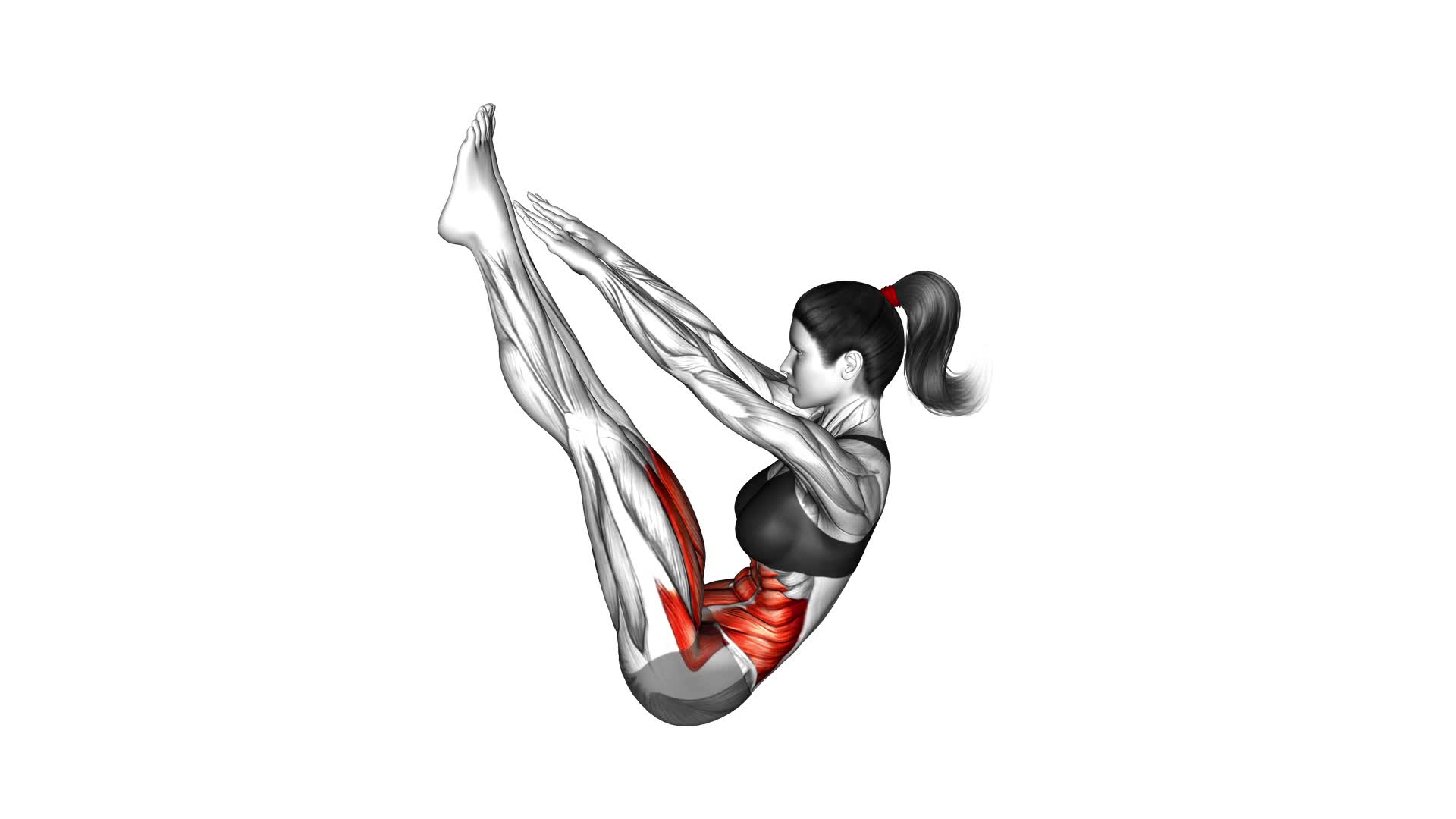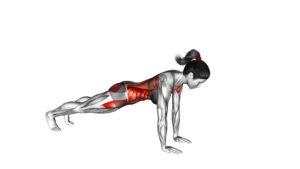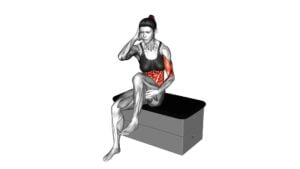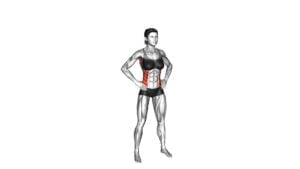V-up (female) – Video Exercise Guide & Tips

Get ready to sculpt and strengthen your core with the V-up exercise!
Watch This Exercise Video
In this video exercise guide, we'll show you the proper form and technique to maximize your results.
Whether you're a beginner or looking to amp up the intensity, we've got you covered with modifications and tips.
Avoid common mistakes and get ready to feel the burn as we guide you through a sample V-up workout routine.
Let's get started!
Key Takeaways
- The V-up exercise strengthens core muscles and targets abdominal muscles.
- Proper form and technique are important for maximizing the benefits of the exercise.
- Beginners should be mindful of common form mistakes and make modifications as needed.
- Intensity can be increased by incorporating resistance training, increasing frequency and duration of workouts, and adding variations and progressions.
Benefits of the V-up Exercise
The V-up exercise offers numerous benefits for women. One of the main benefits is that it helps to strengthen your core muscles. The V-up specifically targets your abdominal muscles, which are essential for maintaining good posture and stability. By regularly incorporating V-ups into your workout routine, you can develop a strong and toned core.
Strong core muscles not only improve your overall physical appearance, but they also play a crucial role in everyday activities. A strong core can help prevent lower back pain and improve your balance and coordination. Additionally, having a strong core can enhance your performance in other exercises and sports.
To perform the V-up exercise, lie flat on your back with your arms extended above your head and your legs straight. Simultaneously, lift your upper body and legs off the ground, forming a V shape with your body. Hold for a moment, then slowly lower back down to the starting position.
Proper Form and Technique
To perform the V-up exercise with proper form and technique, there are a few key points to keep in mind.
First, focus on maintaining proper alignment and posture throughout the movement, engaging your core muscles and keeping your back straight.
Secondly, remember to breathe in a controlled manner, exhaling as you lift your legs and upper body off the ground.
Lastly, be mindful of common form mistakes such as using momentum to swing your legs or straining your neck.
Alignment and Posture
Maintain proper alignment and posture by engaging your core and keeping your body in a straight line during the V-up exercise. This ensures that you not only target your core muscles effectively but also reduces the risk of back pain.
Here are some tips to help you maintain good alignment and posture during the V-up exercise:
- Start by lying flat on your back with your legs extended and your arms overhead.
- Engage your core by drawing your belly button towards your spine.
- Lift your legs and upper body simultaneously, keeping your lower back pressed firmly into the ground.
- Reach towards your toes, keeping your neck aligned with your spine.
- Slowly lower back down to the starting position with control.
Breathing During Exercise
As you perform the V-up exercise, it's important to focus on your breathing technique to maximize the effectiveness of the exercise. Proper breathing techniques and breath control play a crucial role in maintaining stability, enhancing performance, and reducing the risk of injury during exercise.
When executing the V-up, exhale as you lift your upper body and legs off the ground, engaging your core muscles. Inhale as you lower your body back to the starting position. By exhaling during the exertion phase and inhaling during the relaxation phase, you can optimize the oxygen flow to your muscles and maintain a steady rhythm. This helps improve your endurance and overall performance.
Common Form Mistakes
When performing the V-up exercise, be mindful of common form mistakes that can affect your proper form and technique. To ensure correct alignment and posture, avoid the following errors:
- Arching your back: Keep your lower back pressed into the floor throughout the movement.
- Lifting your shoulders too high: Focus on engaging your core and lifting your upper body just enough to touch your toes.
- Straining your neck: Keep your neck relaxed and in line with your spine.
- Using momentum: Avoid swinging your legs and instead use controlled movements.
- Neglecting modifications for beginners: If you're new to the V-up exercise, start with bent knees or perform a modified version, such as the single leg V-up.
Modifications for Beginners
To modify the V-up exercise for beginners, start by using a mat or towel for extra support. This will help cushion your lower back and make the exercise more comfortable.
Additionally, instead of extending your legs fully, you can keep them slightly bent to reduce the strain on your lower back and make it easier to lift them off the ground.
Another modification you can make is to bend your knees and place your feet flat on the floor. This will provide more stability and make it easier to engage your core muscles.
It's important to focus on maintaining proper form throughout the exercise. Common mistakes beginners make include lifting their head and neck off the ground, which can strain the neck muscles. Instead, keep your head in a neutral position and focus on using your core muscles to lift your upper body off the ground.
Remember to breathe steadily throughout the exercise and listen to your body. As you become more comfortable and stronger, you can gradually increase the difficulty of the exercise.
Common Mistakes to Avoid
Avoid these common mistakes when performing the V-up exercise to ensure proper form and maximum effectiveness. Here are some tips to help you avoid these mistakes and get the most out of your workout:
- Rounding your back: Keep your back flat on the ground throughout the exercise to engage your core muscles properly.
- Using momentum: Avoid swinging your legs or using momentum to lift yourself up. Instead, focus on using your core strength to lift your upper body and legs.
- Not engaging your core: Make sure to actively engage your core muscles throughout the entire exercise. This will help you maintain stability and prevent strain on your lower back.
- Lifting your feet too high: While it may be tempting to lift your feet as high as possible, try to keep your legs at a 45-degree angle to avoid straining your lower back.
- Neglecting proper breathing: Remember to breathe in as you lower your legs and breathe out as you lift them up. This will help you maintain control and stability during the exercise.
Tips for Increasing Intensity
To increase the intensity of your V-up exercise, focus on maintaining proper form techniques.
Engaging your core muscles and keeping your legs straight and lifted will challenge your body more effectively.
Additionally, incorporating resistance training, such as using ankle weights or holding a dumbbell, can add an extra level of difficulty to the exercise.
Lastly, increasing the frequency of your V-up workouts will help to further enhance the intensity and maximize your results.
Proper Form Techniques
Increase the intensity of your V-ups by focusing on your form and incorporating proper techniques. Here are some alignment tips and advanced modifications to help you maximize the effectiveness of this exercise:
- Engage your core throughout the entire movement to ensure proper alignment and stability.
- Keep your legs straight and toes pointed, reaching for the ceiling as you lift your upper body off the ground.
- Control the movement by slowly lowering yourself back down, avoiding any swinging or momentum.
To increase difficulty, try adding a medicine ball or dumbbell between your feet. For an even greater challenge, perform V-ups on an unstable surface, such as a Bosu ball or balance board.
Incorporating Resistance Training
To further challenge yourself and increase the intensity of your V-ups, incorporate resistance training into your routine.
Incorporating weights or resistance band exercises can help you build strength and make your workouts more challenging.
When using weights, you can hold a dumbbell or kettlebell in your hands and perform the V-up exercise. This added resistance will engage your muscles even more and help you develop greater core strength.
Resistance band exercises, such as using a band around your feet or ankles, can also provide added resistance during the V-up movement.
Increasing Workout Frequency
To maximize the effectiveness of your V-up workouts, it's crucial to gradually increase the frequency at which you engage in this exercise. By doing so, you can challenge your muscles and continuously push yourself to new levels of strength and endurance.
Here are some tips for increasing the intensity of your V-up workouts:
- Increase the number of days per week that you perform V-ups.
- Gradually add more sets and repetitions to each workout.
- Extend the duration of your V-up sessions.
- Incorporate variations and progressions to make the exercise more challenging.
- Track your progress by keeping a workout journal or using a fitness app to monitor your improvements over time.
Sample V-up Workout Routine
You can try incorporating a challenging V-up workout routine into your fitness regimen. By adding variations and progressions to your V-up exercises, you can continue to challenge your core and improve your overall strength.
One sample variation of the V-up exercise is the Russian twist V-up. Start by lying on your back with your legs extended and your arms straight out in front of you. As you lift your upper body off the ground, simultaneously twist your torso to the right and bring your knees towards your chest. Return to the starting position and repeat on the left side. This variation adds an extra challenge by engaging your obliques.
Another effective V-up progression is the weighted V-up. Hold a dumbbell or medicine ball in your hands as you perform the V-up exercise. The added weight increases the intensity and engages your core even more.
To further challenge yourself, you can try incorporating a V-up circuit into your workout routine. Alternate between different variations of the V-up exercise, such as the Russian twist V-up and the weighted V-up, for a total of 3 sets with 10-12 repetitions each.
Remember to always maintain proper form and listen to your body. As you continue to progress with your V-up routine, you'll notice improvements in your core strength and overall fitness level.
Frequently Asked Questions
How Many Calories Does the V-Up Exercise Burn?
The v-up exercise is an effective core workout that can help you burn calories. It targets your abdominal muscles and requires both strength and stability.
While the exact number of calories burned during a v-up exercise can vary depending on factors such as your weight and intensity, it's generally considered a calorie-burning exercise.
Can the V-Up Exercise Help in Achieving a Flat Stomach?
To achieve a flat stomach, the v-up exercise can be a helpful addition to your routine. It targets your abdominal muscles and can contribute to toning your midsection.
To perform the v-up exercise correctly, lie on your back, lift your legs and upper body simultaneously, reaching your hands toward your feet. For beginners, you can modify the exercise by bending your knees or performing a modified version where you only lift your upper body.
Remember to maintain proper form and technique throughout.
Is It Safe to Perform the V-Up Exercise During Pregnancy?
During pregnancy, it's important to prioritize the safety of both you and your baby. Engaging in modified v-up exercises is generally considered safe, but it's recommended to consult with your healthcare provider first.
If you're advised against v-ups, there are alternative exercises that can help strengthen your core without putting excessive strain on your abdomen.
It's crucial to listen to your body and make modifications as necessary to ensure a safe and healthy pregnancy.
What Muscles Does the V-Up Exercise Target?
The V-up exercise is a great way to strengthen your core and give your abs a good workout. By performing this exercise, you can target multiple muscles in your abdominal area, including the rectus abdominis and the obliques.
It involves lifting your legs and upper body off the ground while reaching for your toes. This movement engages and activates these muscles, helping to improve your overall core strength and stability.
Can the V-Up Exercise Be Done Without Equipment?
Yes, you can do the v-up exercise without any equipment. There are different variations of the v-up exercise that you can try, such as the bent knee v-up or the modified v-up. These variations can provide a similar challenge to the traditional v-up exercise.
If you're a beginner and find the v-up exercise too difficult, there are alternative exercises you can do, such as the bicycle crunch or the lying leg raise, which are more suitable for beginners.
Conclusion
In conclusion, the V-up exercise is an effective way to strengthen your core muscles and improve overall fitness. By maintaining proper form and avoiding common mistakes, you can maximize the benefits of this exercise.
Beginners can modify the V-up to suit their fitness level, while more advanced individuals can increase intensity for a greater challenge.
Incorporating the V-up into a regular workout routine can help you achieve your fitness goals and enhance your overall physical well-being.

Author
Years ago, the spark of my life’s passion ignited in my mind the moment I stepped into the local gym for the first time. The inaugural bead of perspiration, the initial endeavor, the very first surge of endorphins, and a sense of pride that washed over me post-workout marked the beginning of my deep-seated interest in strength sports, fitness, and sports nutrition. This very curiosity blossomed rapidly into a profound fascination, propelling me to earn a Master’s degree in Physical Education from the Academy of Physical Education in Krakow, followed by a Sports Manager diploma from the Jagiellonian University. My journey of growth led me to gain more specialized qualifications, such as being a certified personal trainer with a focus on sports dietetics, a lifeguard, and an instructor for wellness and corrective gymnastics. Theoretical knowledge paired seamlessly with practical experience, reinforcing my belief that the transformation of individuals under my guidance was also a reflection of my personal growth. This belief holds true even today. Each day, I strive to push the boundaries and explore new realms. These realms gently elevate me to greater heights. The unique combination of passion for my field and the continuous quest for growth fuels my drive to break new ground.



